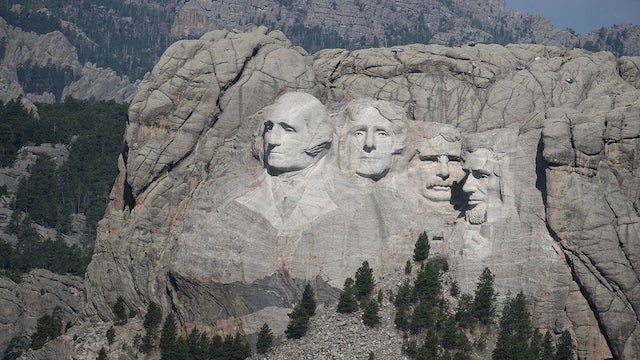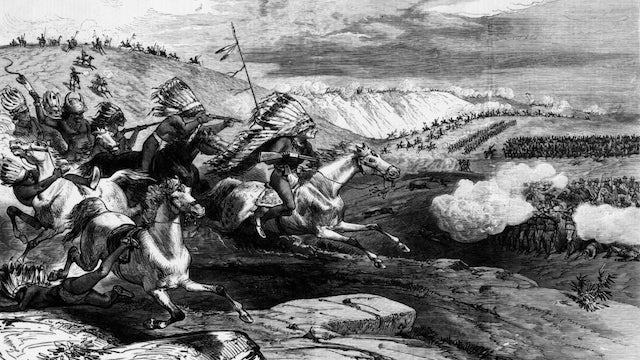If only everything was this easy…
 There are few American heritage sites as well known as Mount Rushmore. The colossal statues, which can be found in the Black Hills of South Dakota, are known as “The Shrine of Democracy.”
There are few American heritage sites as well known as Mount Rushmore. The colossal statues, which can be found in the Black Hills of South Dakota, are known as “The Shrine of Democracy.”
It’s been nearly a century since the controversial monument was started and left unfinished but despite its unfinished status, the monument attracts more than 2 million visitors per year. While the Native Americans who call the land home have a much more spiritual name for the landmark, the mountain was renamed for a dandy New York lawyer.
Who Is Mount Rushmore Named For?
 Though the Plains Indians of the Black Hills had long called Mount Rushmore by a different name, the gorgeous tract of land was renamed after the Great Sioux War of 1876. Contrary to what you might think, it wasn’t a politician or even a wealthy investor who claimed the mountain for himself — rather, it was a young New York attorney simply doing his job.
Though the Plains Indians of the Black Hills had long called Mount Rushmore by a different name, the gorgeous tract of land was renamed after the Great Sioux War of 1876. Contrary to what you might think, it wasn’t a politician or even a wealthy investor who claimed the mountain for himself — rather, it was a young New York attorney simply doing his job.
In late 1883, Charles E. Rushmore was a wet-behind-the-ears attorney. According to a letter penned by Mr. Rushmore, the then 26-year-old was sent to the Black Hills by his New York employer to investigate the viability of the Etta Cassiterite Mine.
The New York gentlemen spent several weeks roughing it in the Black Hills with hardened prospecting men, in his own opinion. Rushmore wrote, “In my life among these rough, but kindly, men I conformed to their ways, and, may I say it with becoming modesty, was in favor with them.”
Rushmore was enamored by the regal granite slopes, and more than once was struck by the natural beauty of the “majestic pile.” When Rushmore asked his guides for the name of the slope that inspired so much awe, the men claimed that it had no name.
According to Rushmore, one man, Bill Challis, chimed in saying, “We will name it now, and name it Rushmore Peak.”
Rushmore returned to New York to give his employers news of the mine’s substantive viability for tin production. The Mount Rushmore name was used colloquially by South Dakota residents for decades before finally being adopted legally in 1930.
Nearly 40 years after his expedition, a fellow lawyer told Rushmore of sculptor Gutzon Borglum’s intended project. A historian assigned to the project had misidentified Rushmore as a Philadelphian, prompting him to reach out and ensure that his true heritage was known. He wished the project well and went on to donate $5,000 to the cause, equivalent to nearly $87,000 today in 1925.
The tidy sum has prompted some to question Rushmore’s claims that it was named for him prior to his sizable donation.
What was the Sioux name for Mount Rushmore?
 Long before settlers colonized the western United States, the Arapaho, Cheyenne, and Lakota Sioux called the Black Hills of South Dakota home. The Plains Indians considered the area sacred and called the mountain “6 Grandfathers.” It symbolized ancestral deities for the six directions: North, South, East, and West, as well as the sky and the earth.
Long before settlers colonized the western United States, the Arapaho, Cheyenne, and Lakota Sioux called the Black Hills of South Dakota home. The Plains Indians considered the area sacred and called the mountain “6 Grandfathers.” It symbolized ancestral deities for the six directions: North, South, East, and West, as well as the sky and the earth.
The land was granted in perpetuity to the Sioux in 1868, but when General Custer summited the mountain in 1887, the metal-rich veins discovered by the expedition kicked off the Black Hills Gold Rush and triggered a gold rush. The Native Americans refused to cede any land to the encroaching settlers, kicking off the Great Sioux War of 1876. By 1877, the government had forcibly taken the land and moved the Sioux to permanent reservations.
The bloodshed around the annexation of promised sacred land has led critics of Mount Rushmore to call the monument the “Shire of Hypocrisy.”
Written by Ash Martinez for We Got This Covered ~ May 15, 2024
